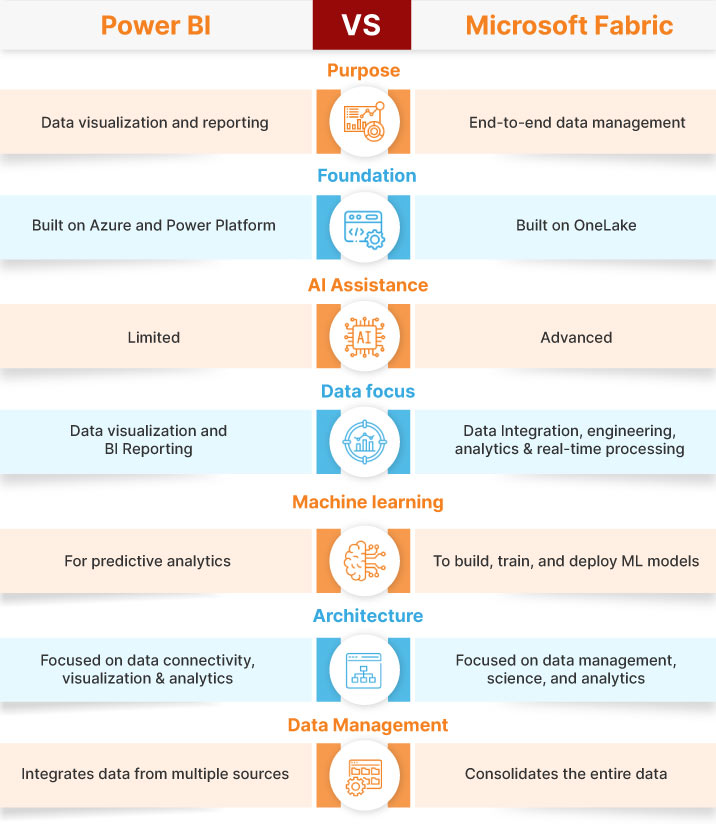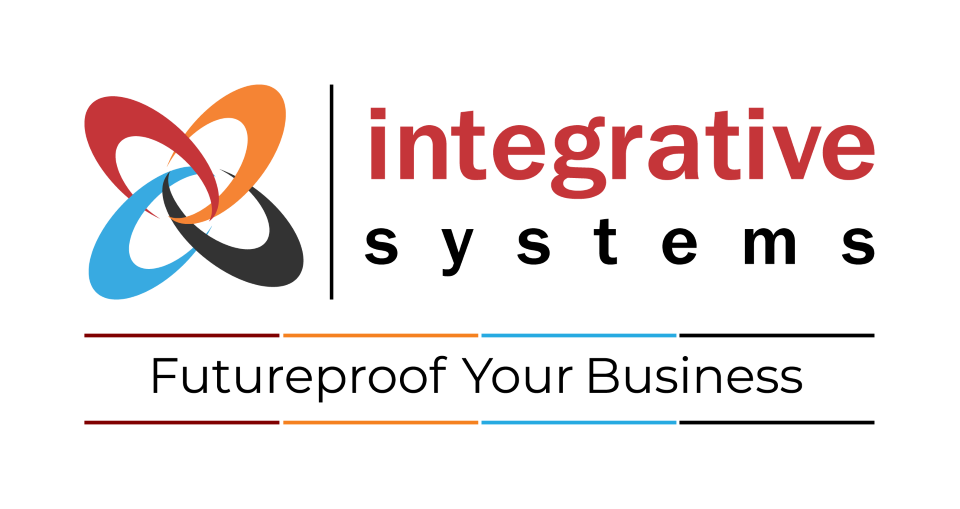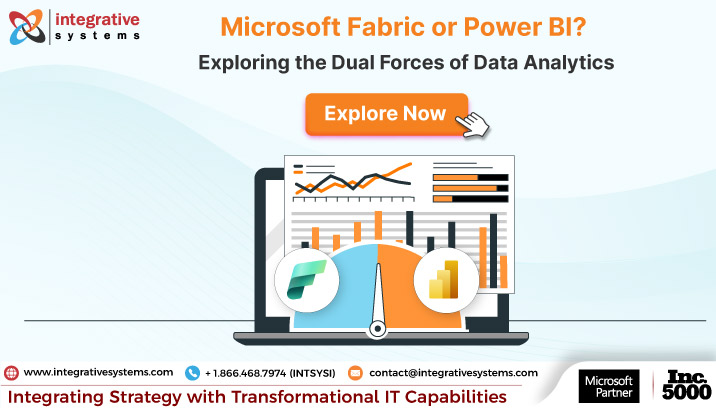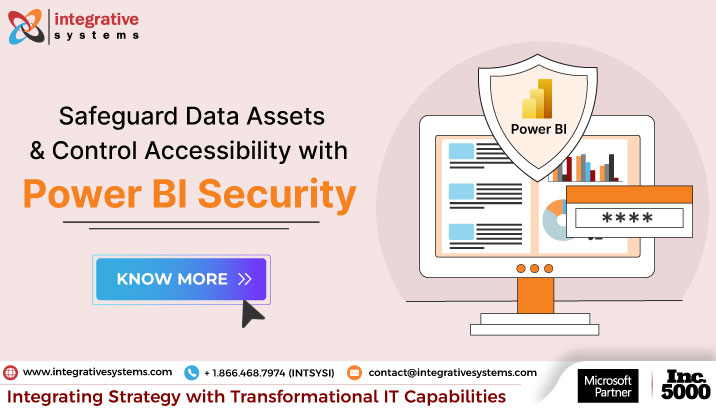Microsoft Fabric vs Power BI? Both belong to Microsoft product line? Why would Microsoft build two different tools that compete with each-other?
Hold your horses for a moment!
Well, we aren’t undermining your level of expertise and experience as a CTO/CIO/Decision-maker. You are very much capable of choosing the best business intelligence tool, accustomed to your data needs.
Yet, the intention is to help you make the right choice – based on use cases, features, and benefits.
At first, here are some numbers you must know –
Over 25,000 organizations around the world are using Microsoft Fabric today, including 67% of the Fortune 500 companies. And over 84% of these companies are using 3 or more workloads ~ according to the Corporate Vice President at Microsoft.
Whereas Power BI is a leading data visualization and reporting tool with 6 million+ users and 97% of Fortune 500 companies use it to visualize data insights ~ according to Gartner.
Does this add another layer to the confusion?
Trust us. It will take a few minutes of your time.
But, as you finish this read, you will have insights which would otherwise take at least 3 hours of valuable time.
So, if you’re confused about which tool best serves your BI needs, relax!
- What does this guide have for you?
- What is Power BI? What is Microsoft fabric?
- Microsoft Fabric vs Power BI- Points of Disparity
- How do they empower your BI initiatives?
- How do you benefit from Power BI & Microsoft Fabric integration?
- Microsoft fabric or Power BI – which tool brings a better deal to your business?
- Why should you invest in Power BI consulting today?
- With a Bonus: Frequently asked questions about Power BI versus Microsoft fabric.
Let’s set the ball rolling to unveil the comparison between Power BI vs Microsoft Fabric and a lot more on your way.
What is Power BI?
Microsoft Power BI (Power Business Intelligence) is a popular data visualization and reporting tool that converts raw data from diverse sources to build appealing dashboards and reports, allows you to distribute them across your team, and even embed them in your app or website.
While discussing Microsoft Fabric vs Power BI, it is worth noting that Power BI was made generally available in the year 2015, way before Microsoft Fabric.
What Does the Power BI Architecture Consist Of?
- Power Pivot for in-memory data modeling
- Power Query to enable data transformation
- Power BI Gateway for cloud-to-on-premises bridge
- Power BI Visuals for user-friendly graphical elements
- Data Analysis Expressions (DAX) as formula language
- Power BI Report Server for on-premises report publishing
What are the Features of Power BI? You May Wonder.
The features of Power BI include –
- Data connectivity to connect to diverse sources
- Data preparation for data cleansing, transforming, and modeling
- Data visualization for appealing visuals
- Data analytics for advanced analytical techniques
- Collaboration to share insights securely
- Mobile access to access insights on the go
- AI integration for AI-powered insights
- Customization and extensibility for flexible visualization options
Long story short – Power BI is a widespread data visualization and reporting tool by Microsoft, known for its user-friendly interface, impressive data visualization types, cost-effectiveness, and effective decision-making. And it is popularly leveraged by businesses of all sizes.
If Power BI data visualization is on your mind, it’s wise to consult a Power BI consulting company to ensure you take the right approach to Power BI implementation and maximize your investment.
Next, in the comparison between Microsoft Power BI vs Fabric, it’s time to scoop up the capabilities of the second contender – Microsoft Fabric.
What is Microsoft Fabric?
In this comparison of Fabric vs Power BI, it’s time to understand what Microsoft Fabric is.
Microsoft Fabric is an AI-powered, cloud-based SaaS platform designed to bring complete analytical capabilities under a single umbrella for all types of data needs.
Fabric is rather new and one of the biggest launches of a data product by Microsoft as it aims to provide a modern data architecture that is founded on the principles of connectivity, scalability, and a comprehensive ecosystem.
In the debate of Microsoft Fabric vs Power BI, Fabric proves to be a powerful data analytics platform that weaves multiple Microsoft tools together such as Data Factory, Data Activator, Synapse Data Warehouse, Synapse Data Engineering, Synapse Data Science, Synapse Real-Time Analytics, and Power BI to streamline data and analytics initiatives, from data integration, engineering to data science.
Microsoft Fabric Architecture and Components:
Microsoft Fabric has a very interesting foundation.
It adopts the OneLake, a single, unified, logical data lake architecture that acts as a storage layer for catching data from cloud warehouses and lakes such as Amazon S3 or Microsoft platforms.
As opposed to the traditional method of storing data, OneLake allows you to store all the organizational data in the open-source delta lake format.
7 Microsoft Fabric workloads that run on OneLake:
- Data Factory for data integration
- Synapse Analytics services for Data Warehousing, Data Science, Data Engineering, and Real-Time Analytics
- Power BI for Data visualization and reporting
- Data Activator for real-time data processing
By virtue of these solid components, Microsoft Fabric emerges as an all-in-one analytics platform that reduces delivery time by connecting disparate services.
In the debate of Power BI vs Fabric, MS Fabric offers a close integration between diverse Microsoft products and enables speedy insights generation.
What are the Features of Microsoft Fabric? You May Wonder.
Some of the features of Microsoft Fabric include –
- Data integration to connect diverse data sources
- Security and compliance for built-in data protection
- Data transformation to clean, enrich, & prepare data
- AI-powered analytics to automate analysis processes
- Scalability and performance for adaptable infrastructure
- Data visualization to generate interactive dashboards, reports
Long story short– Microsoft Fabric is an end-to-end platform for data analytics and management. It covers everything from data engineering, data science real-time data analytics, to business intelligence, all in one place.
Fabric, a SaaS platform eliminates your need to rely on different services from different vendors and instead brings you a one-stop, easy-to-use analytics solution.
Are you wondering – “Why Microsoft has developed 2 separate products – Power BI and Microsoft Fabric, while both serve the same purpose in data analytics?”
That’s where the confusion begins.
Both Power BI and Microsoft Fabric serve unique purposes in the realm of data analytics and business intelligence.
Microsoft Fabric serves as a comprehensive analytics platform that brings together all the data and analytics tools that your organization needs for data analysis.
Whereas, Power BI, which is a primary component of Microsoft Fabric, serves as a dedicated tool for data visualization and reporting needs only.
Now we’re confident that the clear distinction between the technological capabilities, features, and architecture of Microsoft Fabric vs Power BI has brought you closer to understanding the 2 different yet related data solutions.
As we have knocked down the basics of Power BI vs Fabric, let’s circle back to the dilemma of Microsoft Fabric or Power BI, and dissect your decision-making process with a strategic approach.
What is Microsoft Fabric vs Power BI? – Points of Disparity That You Need to Know
The primary difference that you should consider when scouting potential analytics solutions like Microsoft Fabric and Power BI, is to assess which tool closely aligns with your business’s goals and needs.

Power BI Implementation – How to Get Started for Maximum Business Impact
Looking at Microsoft Fabric vs Power BI features comparison, realized that Power BI is what you need?
See, precisely, Fabric and Power BI are the branches to the same tree – Microsoft.
Though, we’re comparing both of them, they are meant to coexist, eventually.
If, you’re still not convinced on which tool is meant for you – continue reading leaving this point aside – we promise you’ll have your answers by the time you reach the end of this read.
If you find Power BI more relevant to your data visualization and analytical needs, then for you it is Power BI.
Here’s how you can maximize the impact of Power BI with a well-devised implementation plan.
1. Outline Your Business Goals & Reporting Needs
Before you rope in a Power BI implementation services partner – it’s quintessential to outline your BI goals and reporting needs.
This one proactive step helps the Power BI implementation partner configure and customize your Power BI solution – just the way you need it.
Thinking, “Where do I start? How to add structure to may data needs?”
We get it.
Here are some questions to consider.
You can start thinking along similar lines to get your answers.
- What key metrics do you need to track? (e.g., sales performance, customer insights, operational efficiency)
- Who are going to be the first set of users? (This could be decision-makers, executives or may be departments like Marketing, Finance, etc.)
- Will I need real-time insights and automated reports?
These questions are the starting points for you to think through.
Answers to these questions will reveal –
- What kind of data sources do you need to connect to your Power BI solution?
- Who is going to use Power BI the most to establish a data-driven culture?
- Which Power BI features should you sign up for?
As they say – Victory loves preparation.
Power BI experts help you prepare a data-led environment with well-planned Power BI implementation, and Power BI performance optimization. They ensure your Power BI solutions aligns and scales with your evolving business needs.
2. Choose the Right Deployment Model
There’s nothing as crucial than choosing the right deployment model for Power BI implementation.
You ideally have two choices – On-premises or Cloud-based.
The differentiation is clear – you’ve three factors to consider.
- Security.
- Scalability.
- Compliance.
You may ask – “What deployment options are available? When to choose what?”
- If are stringent about data governance & compliance – it’s Power BI On-Premises for you.
- If you are looking for advanced capabilities like scalability, AI-power insights, and collaboration – it’s Power BI cloud deployment for you.
- If you wish to have the best of both worlds – you can go for hybrid deployment with the help of Power BI managed services. This way, you would be enabled to integrate cloud and on-premises environments.
The choice of the right Power BI deployment model determines how well your Power BI solution integrates with your IT ecosystem.
3. Data Preparation & Integration
As we said before, the success of Power BI implementation depends on how well your Power BI solution integrates with your ecosystem.
Realize, if you want to extract actionable insights – it demands clean, structured data as input. And this I/O channel won’t function without precise integration.
Thinking, “How do I attain acute integration of Power BI solution with my IT ecosystem?”
Simply consider the following –
- Employ Power BI migration services to transition data loads, efficiently.
- Establish robust standards for data accuracy, consistency & governance.
- Connect data sources diligently using best practices.
4. Designing Dashboards & Reports
Visualizations are at the heart of Power BI’s value proposition.
As you do, businesses worldwide have heaps of data.
What Power BI helps you do is take charge of that data and make sense of it.
Power BI presents that data in the best possible way – to help you make data-backed decisions.
Thinking, “What should I do to use Power BI’s visualization capabilities to the fullest?”
Start with this –
- Stick to the best practices for visual hierarchy & data storytelling.
- Utilize Power BI performance optimization to your advantage, with large datasets
- Rely on effective Power BI support & maintenance for continued improvements & upgrades.
Leveraging Power BI dashboard development services and consulting you can empower your team to create customized dashboards that reflect real-time actionable insights.
5. User Training & Adoption Strategy
Did you know? 70% of digital transformation efforts fail due to a lack of user adoption and resistance to change ~ According to a report by McKinsey.
Your Power BI implementation is at a great risk of user adoption failure.
Resistance to change.
The complexity of technology.
Excessive comfort level with the current ecosystem.
Anything could be the reason for user adoption failure.
And, you must start preparing your users for a technological advancement, as a strategic decision is made.
Still, thinking, “What if user adoption fails Power BI adoption?”
Power BI managed services can put you at ease.
Here’s why it proves beneficial –
- Get access to practical training customized to your unique use cases.
- Set up role-based access controls for enhanced data security & permissions.
- 365 x 24 x 7 active support to help your users upkeep with Power BI features & upgrades.
Realize, nothing beats a well-articulated Power BI adoption strategy. It ensures your team gets going with Power BI and maximizes the ROI on the investments made.
6. Ongoing Maintenance, Optimization & Support
Realize, that Power BI isn’t a one-off project.
You must observe both – your changing data & reporting needs, and your current Power BI capabilities.
This alignment can’t go off.
Otherwise, your data-initiation will lose its direction.
Microsoft launches new features, upgrades, and templates – which might help you.
Your data & reporting needs may change over time.
And, your job is to keep these both in alignment.
Sounds like there’s too much to do, right?
Power BI consulting services can ease it out for you.
Here’s how it helps –
- Power BI experts regularly audit your BI solution & schedule data refreshes.
- Power BI experts optimize reporting using Power BI performance optimization tactics.
- Power BI experts help you upgrade your BI solution timely to keep up with your changing data & reporting needs.
Bottom line – A reliable Power BI implementation services provider ensures your BI environment is safe, agile, and efficient against all odds.
Power BI implementation is a progressive step toward adopting data culture.
No matter if you deploy Power BI on-premises, migrate from legacy data systems to Power BI cloud solution – a reliable Power BI implementation services provider has got your back.
They follow the right practices for guaranteed success.
They ensure seamless integration of data sources with Power BI.
They ensure Power BI adoption helps you attain expected ROI and high impact.
Mark your Power BI adoption in those 30% of digital transformations that succeed.
Microsoft Fabric vs Power BI – What’s the Difference?
Although Power BI and Microsoft Fabric share a common goal of empowering businesses, such as yours, with data analytics capabilities, both tools differ significantly in their features, audience, and purpose.
Let’s get going to explore the key differences between Microsoft Fabric and Power BI.
Here’s The Difference Between Power BI and Fabric.
1. Microsoft Power BI vs Fabric – Purpose
The purpose of Microsoft Fabric is to unify all data from multiple sources into a cohesive environment and enable teams to access, use, and even experiment with data without the need for separate data tools that may create massive data siloes.
Whereas Power BI is dedicated to visualizing disparate, raw data into presentable insights. Its purpose is to turn disparate data into interactive insights and empower data-driven decision-making.
2. Microsoft Fabric vs Power BI – Audience
MS Fabric covers everything from data management to data science, real-time analytics, machine learning, and business intelligence. Thus, Fabric is aimed at data analysts and data scientists, decision-makers, business leaders, and IT professionals across various industries.
Power BI, on the other hand, is aimed at business leaders, managers, data scientists, analysts, and decision-makers across industries who need to create engaging visualizations and collaborate with other users.
Unlike Microsoft Fabric, Power BI’s audience also extends to ground-level workers who require in-depth insights.
3. Power BI vs Microsoft Fabric – Ease of Use
Microsoft Fabric comprises a suite of tools and solutions such as Power BI, Azure Synapse, Azure Data Factory, and more in one environment, making it difficult to use each tool in tandem. Your team needs training, planning, and understanding of each tool to right-size the Microsoft Fabric investment.
Power BI, on the other hand, is easier to use, owing to its intuitive and user-friendly interface especially compared to MS Fabric.
However, it’s ideal to consult expert Power BI professionals to swim through Power BI’s nitty-gritty, understand its capabilities, create appealing dashboards, and maximize the potential of Power BI for improved decision-making.
4. Power BI vs Fabric – Capabilities
Microsoft Fabric empowers you to –
- Integrate, process, and interpret data in real-time
- Create, train, and deploy machine learning models
- Automate data activity and transformation
- Store and interpret voluminous data in a centralized lakehouse
- Visualize data through Power BI reports and dashboards
On the other hand, Power BI empowers you to –
- Connect diverse data sources
- Create visually appealing and interactive reports
- Collaborate and share Power BI dashboards and reports across teams
5. Microsoft Fabric vs Power BI – Security
Microsoft Fabric walks in with various security, governance and compliance features such as –
- Conditional Access
- Regional Resiliency
- Lockbox, and so on.
And data governance features like data protection to discover, classify, and protect data with sensitivity labels.
Whereas Power BI walks in with security and governance features such as –
- Row-level security
- Role-Based access control
- Auditing and monitoring capabilities
- Data classification and sensitivity labels
And data governance features like dataset certification, data lineage, and impact analysis for enhanced data governance.
It’s worth noting that both tools offer uncompromising data security measures.
6. Fabric vs Power BI – Use Cases
You can use Microsoft Fabric for –
- Data science
- Data engineering
- Big data processing
- Real-time data analytics and machine learning
- Data integration and end-to-end management
You can use Power BI for –
- Machine learning integration
- Data analysis & visualization
- Interactive dashboards
- Business reporting
- Data forecasting
7. Microsoft Fabric vs Power BI – Integration Capabilities
Microsoft Fabric’s integration capabilities excel more than Power BI.
Microsoft Fabric effortlessly combines multiple solutions and technologies including Azure Data Factory, Azure Event Hubs, Azure Data Explorer, Azure Artificial Intelligence, Azure Databricks, Azure Synapse Spark Pools, Azure Synapse Analytics, and Microsoft Power BI within a common SaaS platform.
This all-in-one integration brings diverse benefits to MS Fabric users, such as managing, accessing, and analyzing data, performing complex queries, and producing actionable insights, without switching platforms.
Power BI, on the other hand, is an independent business intelligence tool for data visualization and reporting. It focuses on seamlessly integrating various data sources instead of serving as an end-to-end integrated platform like Microsoft Fabric.
Power BI integration capabilities extend to Azure services, Salesforce, Microsoft Dynamics, Google Analytics, and so on.
Long story short: With Fabric, you don’t need to integrate different services from multiple vendors. Instead, you can enjoy a highly integrated, end-to-end, and easy-to-use product designed to simplify your analytics needs.
Meanwhile, with Power BI (which is a part of Microsoft Fabric) you can harness amazing data visualization formats and reporting capabilities powered by robust security measures.
In the debate of Microsoft Fabric vs Power BI, are you still contemplating which analytics solutions makes an ideal choice for your business?
Leverage the expertise of Power BI consultants to assess your project’s precise needs, and make the right choice between Power BI vs Fabric, confidently.
Are you thinking – “What if I could integrate the 2 tools and open up a new window of possibilities?”
You’re on the right track!
After discussing Power BI vs Microsoft Fabric, let’s now explore the dual power of Fabric and Power BI.
Pricing & Licensing – Choosing the Right Tier for Your Organization
After exploring the differences between Microsoft fabric vs power bi, one critical factor decision-makers often overlook is pricing and licensing.
Understanding the costs of each solution and how they scale with users and workloads can make or break your BI strategy, especially if you’re considering a hybrid adoption.
Here’s a clear breakdown of the current pricing tiers for both platforms –
| Tool | Tier | Users/Capacity | Key Features | Ideal For |
| Power BI Pro | Per-user | 1-100 users | Dashboards, collaboration | Small teams |
| Power BI Premium PPU | Per-user | N/A | AI features, large datasets | Analysts & data teams |
| Power BI Premium Capacity | Capacity-based | Enterprise | Dedicated compute, paginated reports | Enterprise-wide deployment |
| Microsoft Fabric F2 | Entry compute | N/A | Lakehouse, basic integration | Proof of concept / small data workloads |
| Microsoft Fabric F64 | Enterprise compute | N/A | Full analytics suite | Large-scale analytics & AI integration |
By providing clarity around pricing, businesses can make informed decisions about whether to deploy Power BI, Fabric and how to maximize ROI.
Microsoft Fabric and Power BI – Uniting the Forces of Two Analytics Marvels
Undoubtedly, Microsoft Power BI and Fabric are integral parts of Microsoft’s data analysis portfolio.
Microsoft introduced Fabric in 2023, not to outshine Power BI but to synergize with it.
Thus, Power BI is one of the prime components of Microsoft Fabric.
The new Fabric environment has introduced a more cohesive approach to data analysis, serving diverse data professionals such as data engineers, data scientists, and data analysts, along with decision-makers, such as yourself, who can continue leveraging the proven powers of Power BI, for data-backed decision-making.
Consider an instance –
A data scientist leverages the Synapse Data Science component in MS Fabric to produce a sophisticated recommendation engine for an E-commerce platform.
Even in this situation, the expertise of a Power BI professional remains crucial.
Leveraging their expertise in data manipulation and visualization, you can transform the recommendation engine’s output into immersive dashboards and reports, empowering your team of business leaders to drive data-driven decision-making based on the model’s insights.
Looking at this synergy, it wouldn’t be an exaggeration to conclude that it’s not Microsoft Fabric vs Power BI but Power BI and Fabric.
Thinking about – “Am I required to use Microsoft Fabric alongside Power BI?”
Absolutely not! Power BI and Microsoft Fabric perform better as a team however, they can also be best used in their standalone capacities.
So, answer this – “What is the need that creates the demand for data analytics at my organization?”
If you’re looking for something that offers pure data visualization and reporting capabilities – Power BI is your best bet.
If you’re in search of a unified data platform, end-to-end analytical capabilities, and AI-driven insights – Microsoft Fabric is your best choice.
The best course of action is to first assess your data analytics needs and
then choose between Microsoft Fabric vs Power BI.
Are you thinking of leveraging Power BI over Microsoft Fabric?
Great choice!
We’re happy to have helped you arrive at this decision.
Power BI is one of the most easy-to-use business intelligence tools.
Yet –
- It is hard to leverage Power BI’s security features.
- It is harder to integrate Power BI with complex data ecosystems
- And it is hardest to maximize the full potential of Power BI
Thankfully, Power BI consulting exists for that very purpose — to improve your business intelligence experience and tap into the full potential of Power BI.
Curious to know more about it?
In the next fold of our blog, we’ll talk about why you should invest in Power BI consulting services today.
Why Invest in Power BI Consulting Services?
PowerBI consulting provides businesses, such as yours, with custom solutions to design, build, and implement customized Power BI solutions.
These services are designed to help you discover business problems and optimize your business processes.
Ultimately, it is aimed to meet your unique business intelligence and data visualization needs.
The best part?
PowerBI consultants take care of everything, so you don’t have to be directly invested in the process.
Thinking, “How?”
Let’s look at some challenges that Power BI experts solve for you!
#Challenge 1 – Data Integration Difficulties
Power BI helps you create a 360-degree view by integrating data from multiple sources. Its intuitive visualizations allow your users to zoom in on data from multiple angles, uncovering hidden trends. This empowers data-backed decision-making at all levels, leading to smarter choices.
However, many businesses struggle to integrate Power BI with disparate data sources, leading to invaluable insights and subpar decision-making, preventing teams from leveraging the complete potential of Power BI.
What Changes with Professional Power BI Services?
Investing in expert Power BI service makes a significant difference.
The team of BI experts is well aware of Power BI features and its technicalities like the back of their hands.
They help you –
- Assess and map all data sources for accurate Power BI integration
- Automate data refresh for real-time data access
- Standardize data formats across data sources
- Get rid of the duplicates and iron out the inaccuracies
- Implement best data integration practices
The result? You get to experience seamless Power BI integrations with disparate systems, that deliver high-quality insights that drive informed decision-making.
#Challenge 2 – Limited Customization
The strength of Power BI lies in its ability to customize data visualization that brings boring data sets to life. These visuals allow you to zoom into the details and zoom out for an eagle eye view.
But with half-baked knowledge of Power BI data visualization and customization, your team will only get halfway, limiting the impact of your data and BI investment.
What Changes with Expert Power BI Consulting Services?
Don’t let your team fall short of customized insights.
Engage with Power BI consultants to experience the magic of customized reports and dashboards.
They help you –
- Customize user interfaces
- Develop intuitive visualizations that deliver key insights
- Develop in-depth dashboards for better data exploration
- Apply advanced data analytics to uncover hidden patterns
- Build simpler presentations for better communication across teams
- Get your team up to speed & train them in customizing Power BI visuals
The result? Your team gets to leverage deep, customized insights ready to drive effective decision-making.
#Challenge 3 – Reporting Automation
Relying on traditional reports in the age of Business intelligence is like living in the past.
Sadly, many business leaders look at automated report creation as a luxury instead of a necessity.
Without automation, your team is –
- Losing on valuable time
- Making frequent mistakes
- Creating only one report at a time
- Struggling to ensure 100% accuracy
- Compromising on the report quality
H4 – What Changes with Expert Power BI Consulting Services?
The Power BI professionals help you improve your business intelligence strategy by automating report creation within Power BI.
They go beyond automated report creation.
They help you set up –
- Automated reporting workflows that create multiple reports at one time
- Activate real-time dashboard monitoring for real-time visibility
- Install error-checking mechanisms to eliminate mistakes
- Schedule periodic report sharing for timely insights
The result? Your team saves hours of manual effort that could be dedicated to business-specific tasks.
#Challenge 4 – Complex Troubleshooting
Undeniably Power BI is a robust data visualization tool, but it is not without its set of challenges.
Without the right exposure to technicalities, it may be difficult to maneuver Power BI’s capabilities to the fullest.
Your in-house team may struggle to –
- Address the gaps in the data
- Manage report access and sharing
- Address PowerBI security concerns
- Address reporting performance issues
- Maintain uniform data quality and integrity
- Address user interface and navigation issues
- Understand and address data modeling issues
- Spot & fix critical business problems that are holding you back
What Changes with Professional Power BI Support Services?
When you engage with a reliable Power BI partner on the onset or in the middle of your PBI initiative, you get dedicated support for all your needs.
With reliable Power BI experts, you won’t face these issues at all. Even if you do, they are available at your service 24/7.
They understand that every business is different, so they have unique Power BI support offerings.
Their range of Power BI support services include –
- Regulatory Power BI support
- Development Power BI support
- Comprehensive Power BI support
The result? You get to have a worry-free Power BI experience knowing that expert help is always available at hand.
#Challenge 5 – Power BI Training and User Adoption
Implementing Power BI is one side of the story, making the most of it is another.
Many businesses invest in Power BI services such as Power BI Premium or Power BI Pro, but struggle with effective user adoption and utilization.
The team may –
- Resist to adopt due to unfamiliarity with the new tool OR
- Accept the tool but struggle to go beyond the basics
What Changes with Expert Power BI Consulting Services?
The role of expert Power BI consultants proves invaluable here.
They align with your vision to inculcate a data-driven culture in your organization, and help you make your team aware of it.
They untangle your “Why” and help your team associate with it.
They realize it’s not going to happen overnight, and to make it happen, they come up with a proven user adoption strategy.
With the support of Power BI consultants, your team –
- Gets familiar with the BI tool & it’s features
- Develops analytical skills and data literacy
- Learns to create Power BI reports & dashboards that communicate key insights
The result? Your in-house team becomes more agile, informed, and confident in leveraging the power of data.
Thinking, “Where do I find I Power BI consulting company that aligns with my data needs?”
Your search ends here with Integrative Systems.
Integrative Systems – Your Choice of Power BI Development Company
At Integrative Systems, we are an acknowledged Microsoft partner with 2 decades of experience.
Our commitment to turn our clients Power BI challenges into solutions has earned us the reputation of being one of the top Power BI consulting firms in the USA.
Think we are the Power BI partner you’ve been looking for?
Take a look at our range of Power BI services –
- Power BI Implementation and Deployment
- Power BI Dashboard & Report Creation
- Power BI Integration Services
- Power BI Consulting Services
- Power BI Support Services
To know more, shoot us an email at contact@integrativesystems.com and our team of experts will get back to you within 2 business days.
Frequently Asked Questions About Fabric vs Power BI
1. Is Microsoft Fabric Replacing Power BI?
Microsoft Fabric is not replacing Power BI but rather it has included Power BI in its wide suite of data analytics tools. Power BI continues to remain Microsoft’s primary data visualization and reporting tool while serving as one of the primary components of MS Fabric with its proven visualization capabilities.
2. What Is the Difference Between Microsoft Fabric and Power BI?
The difference between Power BI and Microsoft Fabric is, Power BI focuses on data visualization and reporting needs, while Fabric serves as an end-to-end platform providing tools and functionalities for data engineering, data management, data science, data analysis, etc.
3. Is the Power Platform Part of Fabric?
The Power Platform is not a part of Microsoft Fabric however Fabric seamlessly integrates with the Microsoft Power Platform.










8 Comments to “Power BI vs Fabric – Make Smarter Decisions with Data Insights”
Scott
Great breakdown of the differences between Microsoft Fabric and Power BI! It’s really helpful to see how they complement each other and the scenarios where one might be more advantageous than the other. This clarity will definitely assist in making better decisions for our data strategy. Thanks for the insights!
Liam
Great comparison! I appreciate how you highlighted the strengths of both Microsoft Fabric and Power BI. It really helps to clarify which tool might be more suitable depending on specific use cases. Looking forward to more insights on data tools!
Cristopher
Great breakdown of Microsoft Fabric and Power BI! I appreciate how you highlighted their strengths and weaknesses. It’s clear that while Power BI is excellent for data visualization, Fabric’s integration capabilities really set it apart for broader data management tasks. Looking forward to see how they evolve in the future!
Grace Cole
Great breakdown of both platforms! I’m particularly interested in how Microsoft Fabric’s integration capabilities stack up against Power BI’s existing features. It would be great to see more comparisons on specific use cases. Looking forward to your future posts!
Matthew Morgan
Great breakdown of the differences between Microsoft Fabric and Power BI! It’s interesting to see how each tool caters to different aspects of data handling and visualization. I find the integration capabilities of Fabric quite compelling, but Power BI’s user-friendly interface can’t be overlooked. It really feels like both have their strengths depending on the use case. Thanks for the insights!
Ethan Garcia
Great analysis! It’s fascinating to see how Microsoft Fabric integrates with existing tools like Power BI. I’m leaning towards Fabric for its broader capabilities, but I’d love to hear more about specific use cases where Power BI shines. Thanks for the insights!
Lily Taylor
Great breakdown of the differences between Microsoft Fabric and Power BI! It’s interesting to see how each tool caters to different user needs. I personally feel that while Power BI has great visualization capabilities, Fabric’s integration and data management features might give it the edge for larger projects. Looking forward to seeing how these tools evolve!
Rose Dibble
Great comparison! I find it interesting how both Microsoft Fabric and Power BI have their strengths. Fabric seems to have more integration capabilities while Power BI is still a leader in data visualization. It’s going to be exciting to see how they evolve and compete in the future!